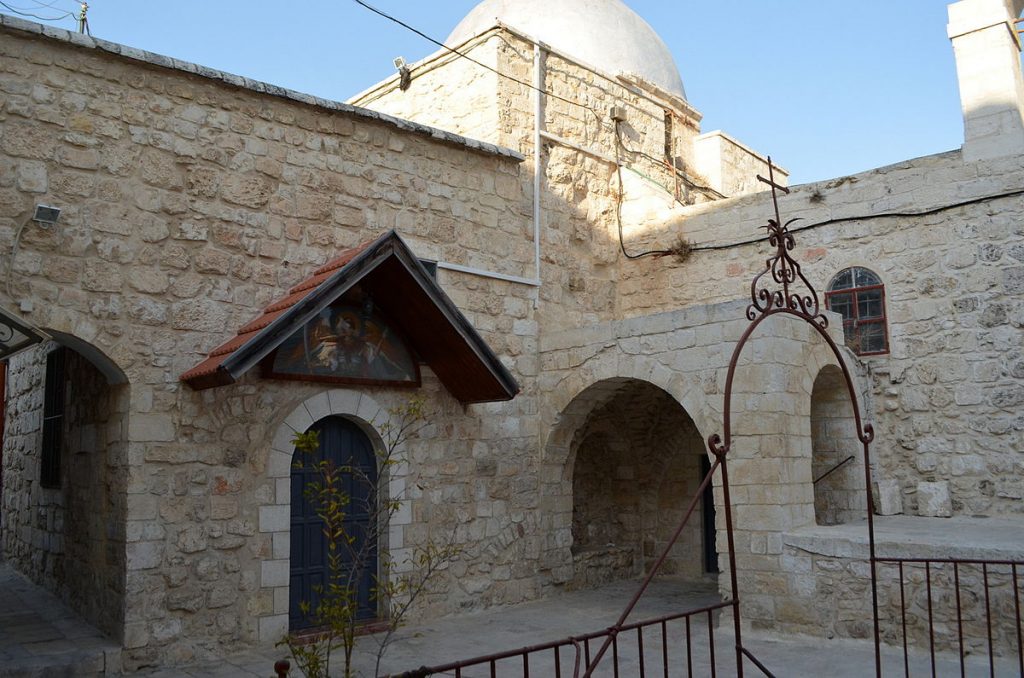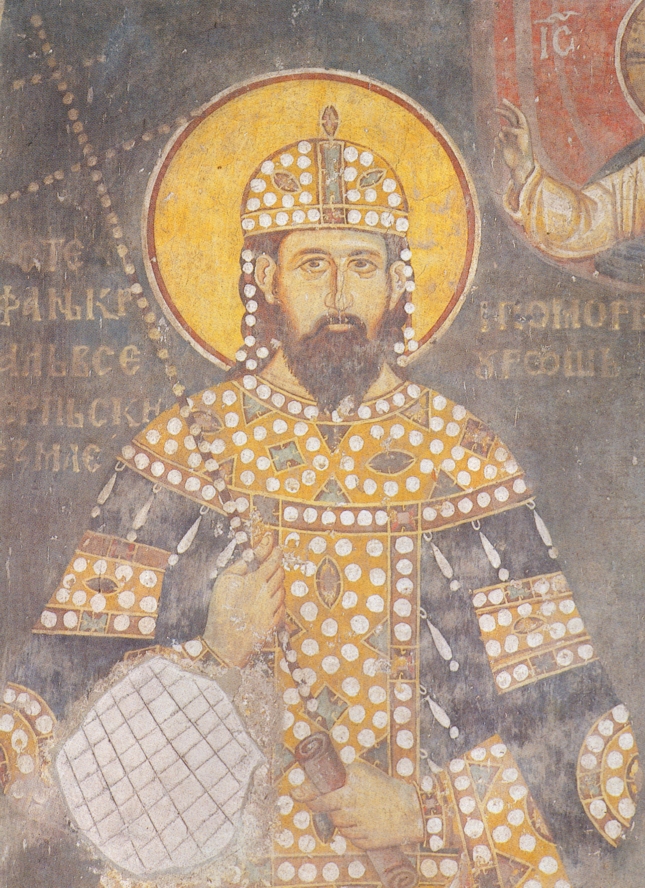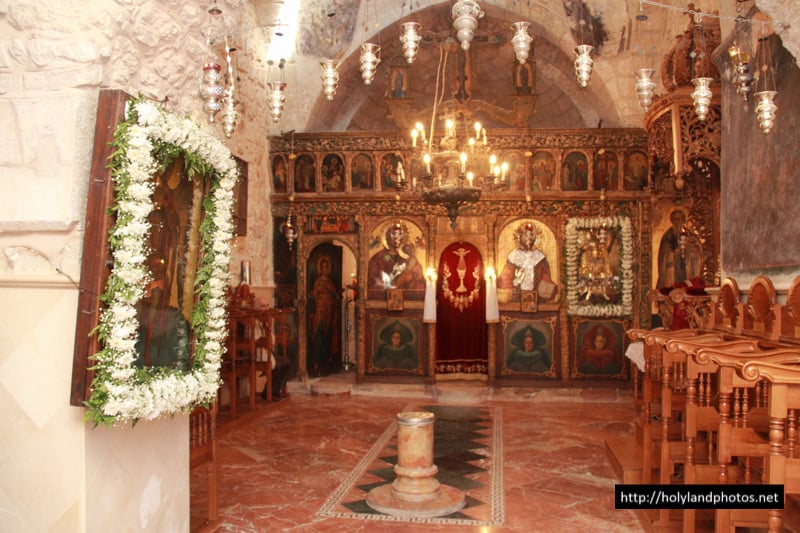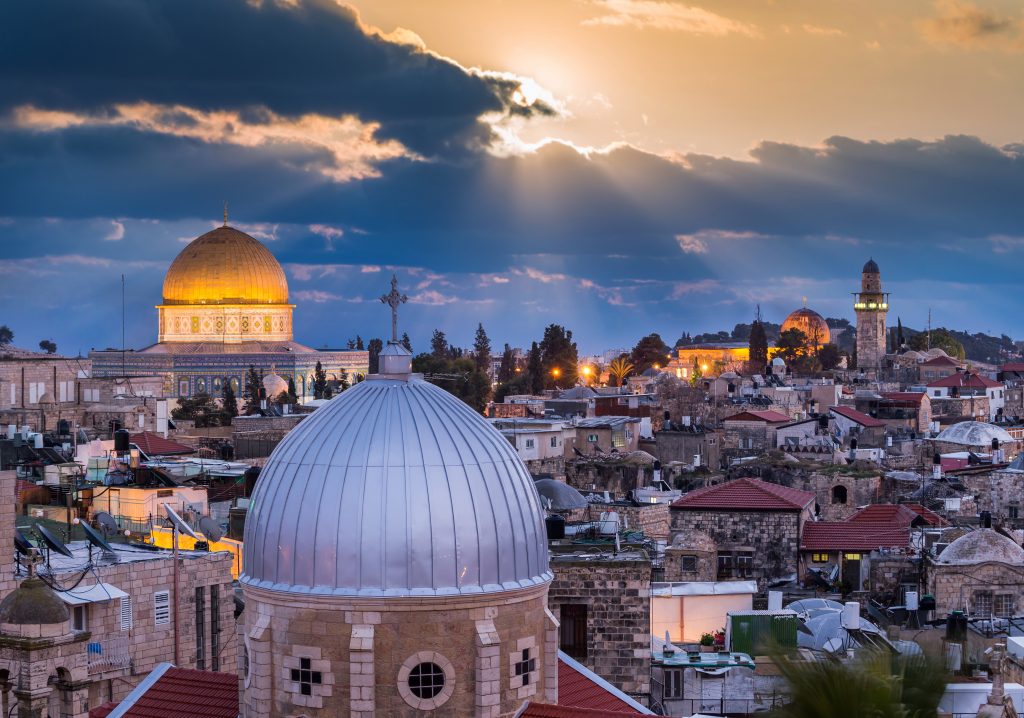As part of the brilliant victory over the Turks, King Milutin built the monastery of the Holy Archangels in Jerusalem near the Church of the Holy Sepulcher – at the place where the Holy Archangel Michael lowered his sword after the suffering of the inhabitants in the time of Emperor David

Many churches and monasteries throughout the Orthodox universe are dedicated to the Holy Archangels Michael and Gabriel, from Jerusalem, where King Milutin raised his endowment, to Kosovo and Metohija (Serbia) and the Greek islands, to areas covered with snow and ice and distant continents and unknown landscapes.
One of the forty endowments of the Holy Serbian King Uroš Milutin was erected near the Church of the Holy Sepulcher in Jerusalem, in 1315, and dedicated to the Holy Archangels. The story of the origin of this holy place in the Holy Land begins in Asia Minor, the first battle of the Serbian army with Turkish hordes that threatened the Eastern Roman Empire. In this battle the best composition of the Serbian army of that time participated, with about a thousand fighters. They arrived to help Milutin’s father-in-law, the father of Queen Simonida, the Byzantine emperor Andrinik.

He crossed the Black Sea and defeated the Persians
Archbishop Danilo left special testimonies about the extraordinary victory under the leadership of Duke Novak Grebostek in his chronicle, and other documents mention that “battles were fought many times in Anatolia against the godless Persians”, noting that “even the Black Sea had to be crossed”. .
In order to mark this first victory over the Turks in a dignified manner, King Milutin built the Monastery of the Holy Archangels on the foundations of the destroyed church of Empress Jelena from the fourth century, on a place of exceptional biblical significance. It is connected with the year 997 BC and the census ordered by King David, to see how many citizens there are.
At that place, the Angel of the Lord stretched out his hand on Jerusalem, with a sword stabbed into the stone in front of him. That place and that stone are still marked today in front of the altar of Milutin’s endowment, the Holy Archangel Monastery Church! In addition to the temple, large lodgings, a hospital and a special accommodation for worshipers who came to the Holy Land from Serbia were built.

It was the spiritual center of the Serbs in Jerusalem
There are many documents, records and testimonies about the life and significance of this monastery, to which Tsar Dusan also provided large revenues, starting from the monastery of the Holy Savior on Bojana, St. Nicholas on the island of Vranjina and its convents, to taxes paid by Dubrovnik, Ston and Peljesac. . These revenues were paid out until 1501. The fact that at the beginning of the sixteenth century this monastery was significantly renovated and that in those years the Serbs took over the management of the Monastery of St. Sava the Consecrated speaks of the great influence and residence of Serbs in the Holy Land at that time.

Recently, in this century, in Sinai, in the archives of the Monastery of St. Catherine, a manuscript of the Greek monk Athanasios Ypsilandis from 1533 was found, in which it is written that:
“Serbian monks, under the direction of the Archbishop of Peja, have long been managing and staying in the Monastery of the Holy Archangels in Jerusalem.”
The monastery has suffered many sufferings over the centuries, from attacks by Bedouins and other robbers, plague and other diseases, to almost complete collapse. The Greek Patriarchate of Jerusalem bought it before the end of the seventeenth century and it is still under its jurisdiction, but it is many times mentioned and remembered by connoisseurs and pilgrims as a Serbian monastery.
It will also be called Serbian by the leader of the Russian mission in Jerusalem, Porphyry of the Assumption, who, like many other Russian church dignitaries and worshipers, stayed in it (because the Russians did not have their own monastery at the time) , who says that the Monastery of the Holy Archangels in the Holy City, with many icons, many of which are Serbian, with forty cells that can accommodate up to two hundred pilgrims. He also praises and describes the treasury, the hospital, the dining room and the “wonderful library with Greek, Latin, Serbian and Slavic manuscripts and printed books.
Thousands of Serbian pilgrims and many church dignitaries visited this Monastery, from Arsenij Treći Čarnojević, Metropolitan of Serbia Mihailo, to Patriarch German and Patriarch Pavle. All of them attended or participated in the Holy Liturgy, which has been served in the Serbian language on the feast of Serbian Saint Sava for centuries.

